Dripper for drip irrigation
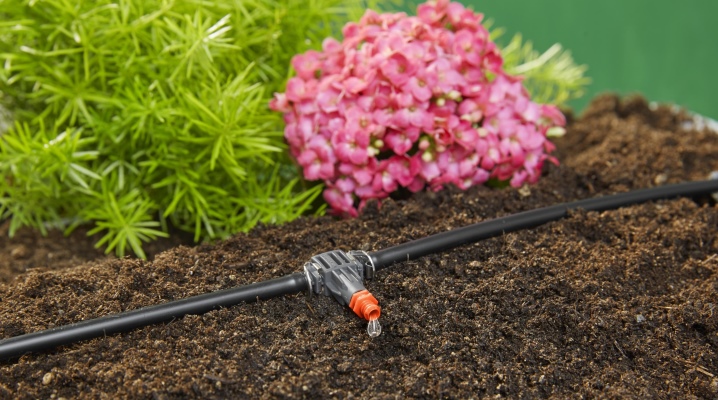
Drippers for drip irrigation - the ability to entrust the function of soil moistening under newly planted home, garden or garden crops to automation, for example, while on vacation or on a business trip.

What it is?
Drip irrigation, unlike jet irrigation, will reduce the cost of water for irrigation. This is true for summer residents, whose water from the water supply system is counted by the meter. Each spent liter of water is under the close scrutiny of the local "city water utility". Water consumption is reduced by about half compared to conventional hose irrigation, including sprinkler irrigation.
The purpose of the dropper is to supply water directly to the plant roots. As a result, all garden plantings will receive uniform moisture.
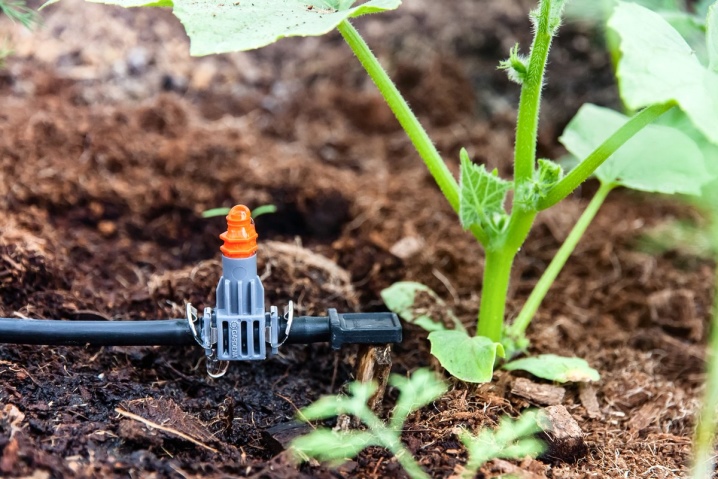
Even a beginner can mount it and adapt it for regular watering.
Before entering the dropper, the water is purified by means of a household or special filter. This will enable the pipelines not to become clogged with sediment. Regardless of the location of the beds, the dropper allows watering plantings even on terraced slopes in high mountain areas. The space between the rows of cultivated crops remains dry, and weeds do not grow.

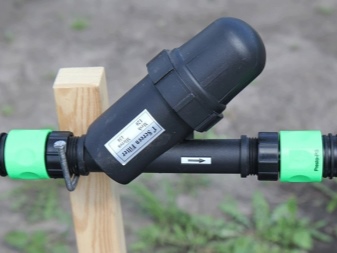
Species overview
The first to help the summer resident came devices built into the hose - their performance is good with a small irrigation area. The system located inside the hose has replaced the one used as the plug-in. The term of the "intra-hose" dropper is at least several years. It is used when the hose stretches for a kilometer or more, and the terrain has a significant slope relative to the horizon, characterized by prolonged ups and downs.
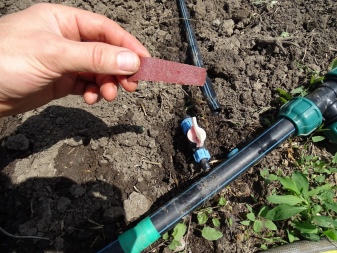

The precision of the irrigation dripper is high. It is possible to water several bushes or trees at once thanks to the installation of tees at the branching points of the hose. By purpose, droppers are divided into the following types.
- Katif - used for flexible hoses with a wall thickness of no more than 1.5 mm. The hose is flexible enough.
- Supertyf - a high-precision type of device. Allows the use of splitters.
Despite the difference in parameters, the installation of both types of droppers takes little time.

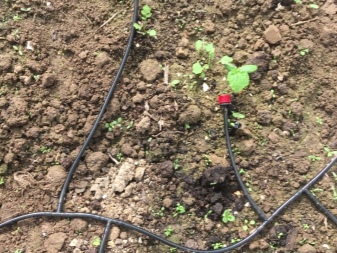
Simple
A simple system - a hose with holes. Its disadvantage is unstable operation at a distance after 20 m from the pump.
The advantage of such a dropper is that it works from a gravity flow of water (from a refilled tank).
Suspension of simple drippers to a considerable height - to the level of the tank - will lead to ineffective drip irrigation along the entire length of the system.
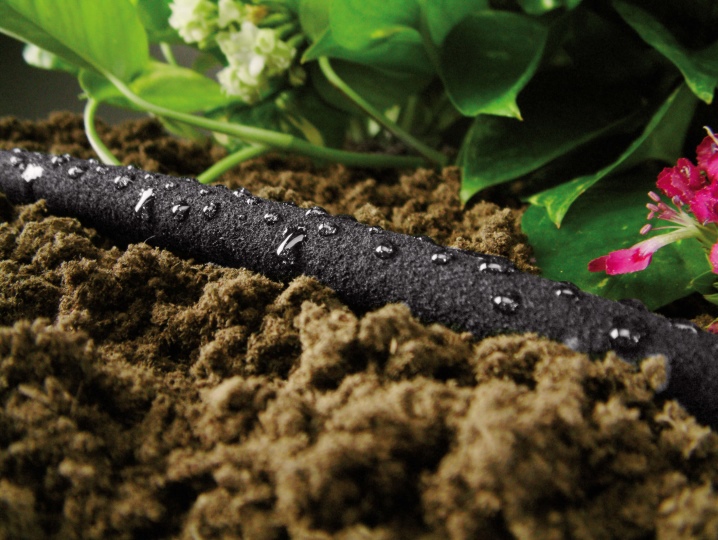
Compensated
This subspecies serves to equalize the amount of water (the number of liters per day) at different points of its exit from the hose. The fact is that plantings located close without a compensation mechanism will receive an excess of water, and more distant ones - a shortage, which will immediately affect their growth and yield. When using a hose with a length of more than 20 m, the difference in water output in the first and last meters will be significant.
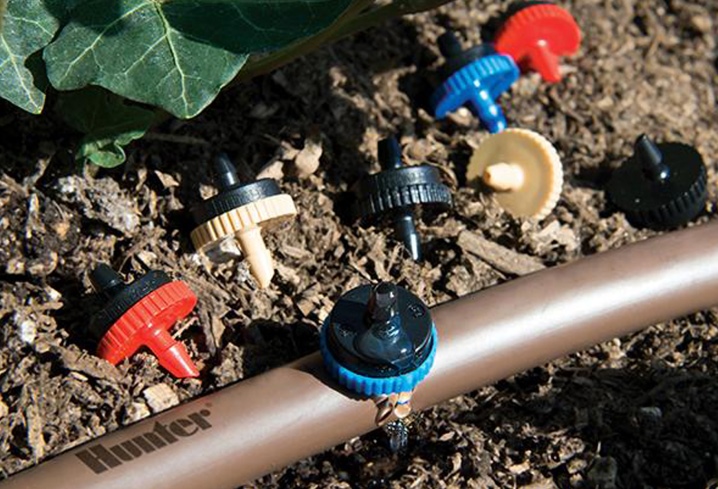
The compensation mechanism is based on membranes that block the lumen for the passage of water at higher pressure.
This method allows you to balance the loss of mechanical (kinetic) energy of the water flowing through the hose due to the friction of the fluid against its walls. Friction, in turn, would lead to a decrease in pressure at the end of the hose.They can be neglected by using this method of compensating for water energy losses.
Each product is characterized by a minimum pressure (in fractions and whole units of atmospheres), below which the operation of the water path is impossible. The thresholds of values are 0.3-1 atmospheres: this pressure is present in the water supply line. Compensated drippers can be disassembled and cleaned if service is required.
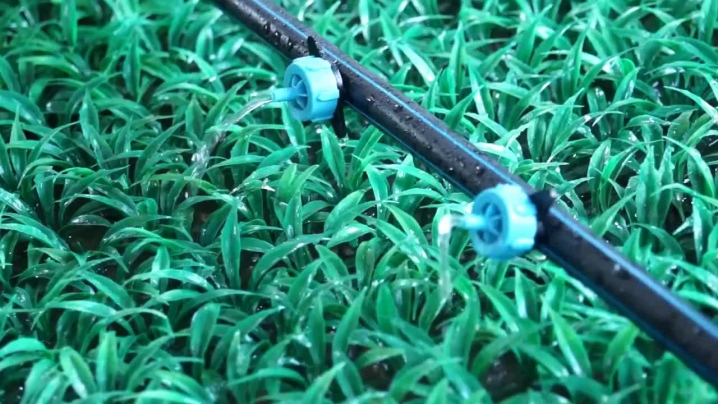
Non-dripping
Non-dripping drippers only work when the minimum permissible water pressure is exceeded. They need this for accurate dosing. When the pressure drops below this mark - for example, when the tank is 2/3 empty - the water supply stops.
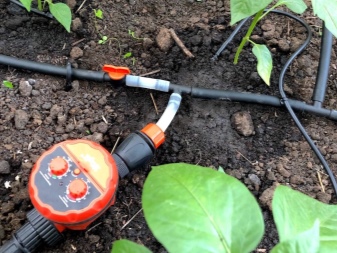

Popular brands
- Set "Harvest-dropper" - auxiliary devices for the drip irrigation system. By adding droppers to the main system, the gardener will provide point-targeted irrigation, taking control of all greenhouse and indoor plantings. The length of the hose is 4 m, it is not necessary to purchase additional accessories. The kit is durable.
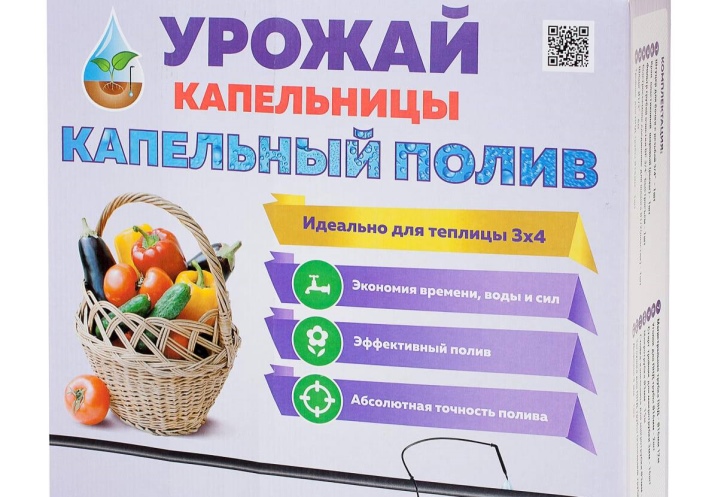
- Drip irrigation Cicle "Beetle Automatic" - a set that includes a pump mechanism with an electronic timer control system, a main hose, branches and a drip chamber. The installation height of the distributing tank is from 1 m. It allows you to simultaneously water 60 bushes, planted on 18 m2 of the garden area of the plot. The system is fail-safe and is used in greenhouses and outdoors.
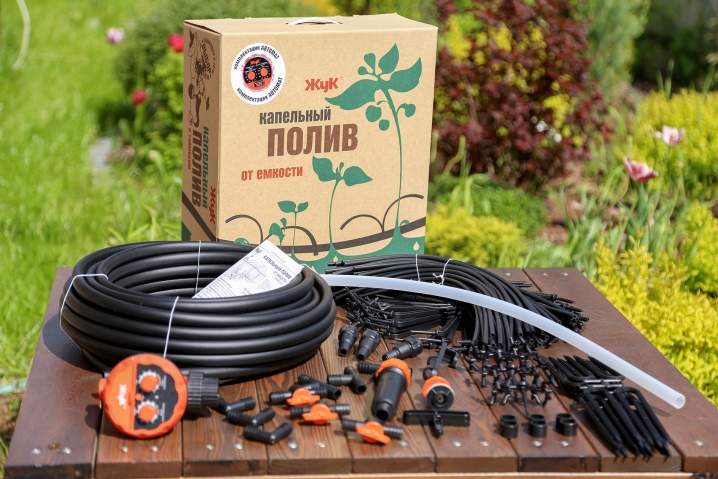
- Gardena 01373-20 - system for greenhouses up to 24 m2. Retrofitted with an automation system. Designed for 40 bushes. Easy to assemble, controlled watering, high quality components. Additional locking and adjusting devices, as well as a program unit, are not provided - these functional units are purchased in addition.
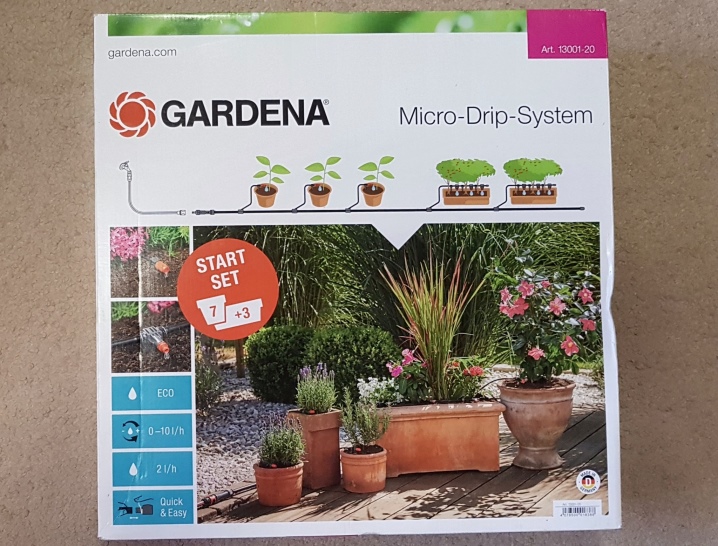
- Green Apple 20-071 - the device is designed for water pressure up to 10 atmospheres, irrigates 20 bushes at the same time. Supplied with adapters for water pipes. Allows you to set an irrigation schedule on the program unit, lasting up to 2 hours, taking control of irrigation for a week in advance. Works with 20m hose. It is powered by batteries and accumulators of the same standard size, equipped with a discharge indication. The water temperature is from 4 to 40 Celsius. The kit needs periodic cleaning.
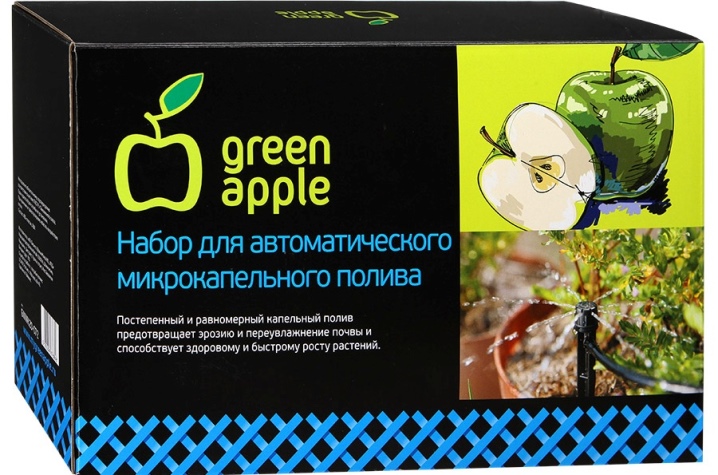
Installation and operation
Do-it-yourself installation and use of drip irrigation systems is quite simple. Self-collection involves carefully poking holes in the hose to allow the water to drip through. Having prepared the hose, the droppers are inserted immediately. It will take noticeable physical strength to insert the droppers into the hose. A loose hose will cause the dropper to fly out of the hose under pressure.
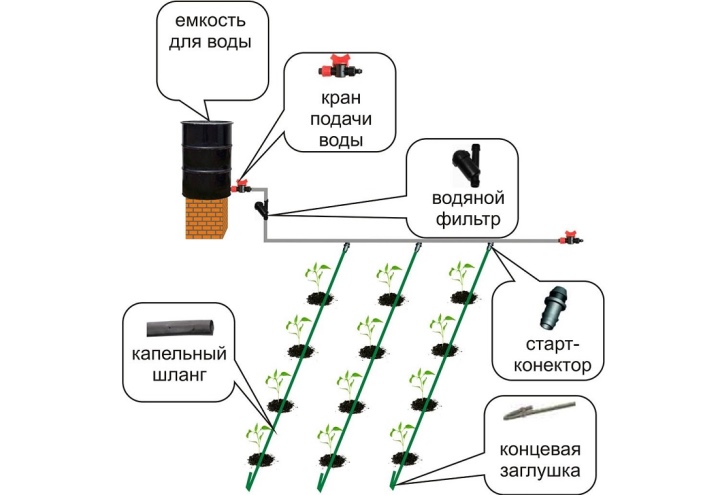
The dropper of the "supertyf" system implies pressing the fitting into the tube. One end of the tube will require a separate tip to be pushed into the soil next to the plant.
Separate holders are provided when using an additional tube. This system makes it possible to use a splitter on four sides. Each of the three sides is supplied with other tubes, as a result, it is possible to simultaneously moisten the soil near four bushes.
The use of outdoor devices with couplers is the lot of potted plants with a total capacity of 4 l / h. This system also applies to flowers planted in the form of a pyramid.
Medical droppers are equally effective for watering greenhouse and pot crops. Garden hoses and metal-plastic reinforcing pipes for laying a water supply system are used as the main line.

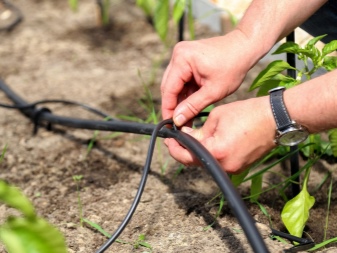
How to do it?
The simplest drip irrigation system in some cases does not even require special installation. The air conditioner, operating in summer at full capacity, drains a day to a bucket of water condensed on the circuit of the outdoor unit. The hose from its branch pipe is supplied, for example, to a vine or a rose bush growing near the house. Condensate water, like distillate, is clean.But these cases of using "air conditioning" are rare.
To calculate the automatic irrigation system before installing it, calculate the total length of the beds. For example, 10 beds of 15 meters each will require at least 150 m of hose or irrigation tape.
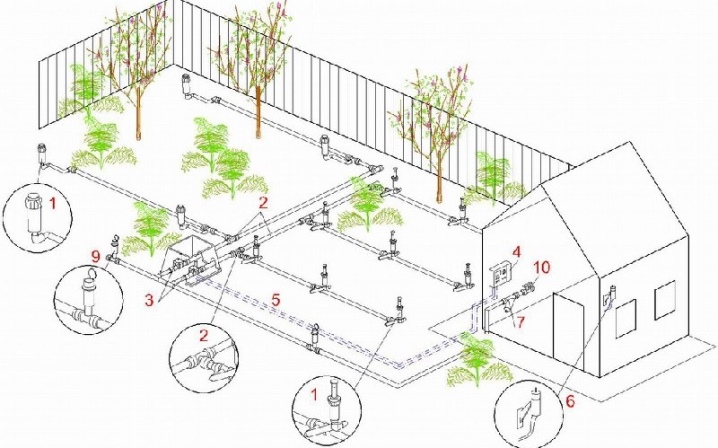
Add to this length a small margin - an additional few meters. Further actions are as follows.
- Install the tank to be filled from the water supply (or from the well) at the desired height - at the beginning of the greenhouse or just outside of it.
- Distribute the hoses (or tapes) to the beds... The already existing landings serve as a reference point. Droppers are placed near the plants.
- Install plugs at the ends of the pipes to prevent water loss. It is recommended to make them removable - this will allow you to quickly clean the system from impurities settling over time.
- Connect the hose to the tank, mount the starter device on the tank and program the control unit. The diameter of the passage of water from the tank to the hose is at least 14 mm, the latter is connected using a cut-in adapter-adapter.
- Punch holes in the tubes for drip water supply. If the system includes droppers - "pegs" - install them next to the plants (one near each), lead the microtubes from the splitters and outlets built into the tape.
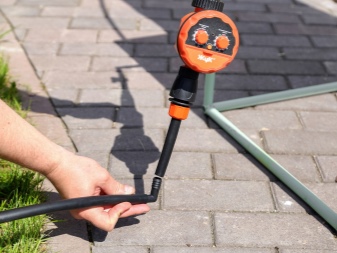
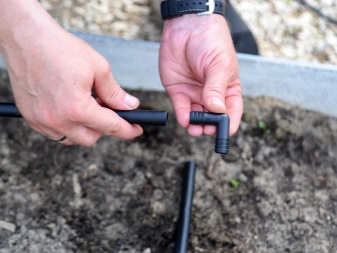
Before starting the system, check the correctness of the installation.













The comment was sent successfully.